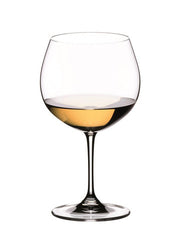With the holiday season quickly approaching, our iQ living blog hopes to keep you posted on great seasonal recipes and tips. Each week we will be offering helpful hints and suggestions to spice up old recipes and re-introduce you to timeless classics.
One of the questions that we’re oftentimes asked at iQ, is whether or not it is really necessary to use different types of wine glasses for specific types of wine. And if so, which glasses go with which wine.

So, what goes in to picking the right glass? Below, we’ve provided a short cheat-sheet of sorts with some helpful tips and pointers.
To begin the shape does matter. Each wine glass is designed for a specific type of wine. The right glassware can enhance the aroma or bouquet of a wine, whereas a glass that is not ideal can completely alter the aroma and ultimately your enjoyment of the wine.
One of the reasons why we love Riedel Glasses is because it is perfectly thin, and devoid of any colour allowing your favorite wines to shine through. From Dec. 13-`5, 2015 Save 15% on all regular priced Riedel Glasses. Shop the Collection now!
How to pair the perfect glass with the right wines:
Chardonnay Montrachet
Ideal for chardonnay, allowing air to come into contact with the wine to keep it fresh, while enhancing the wine’s spicy and nutty taste.

Chardonnay Viognier:
For white wines. The height of the bowl allows the wine to be in contact with air so that it can oxygenate.

Sauvignon Blanc - Riesling:
Recommended use for white wines and also for red, young fruity and light wines. The subtle fruity tones are concentrated in this small glass.

Champagne and sparkling wines:
The classic narrow flute of the glass stresses and preserves the bubbles pushing them upwards allowing them to burst at the tip for the lips rather than inside the glass.

Merlot/ Bordeaux
Used for red wines with significant bouquet. It can also be used for white wines. Its narrow shape allows the wine to breath and the closed rim preserves the aromas inside the glass.

Borolo Glasses (Pinot Noir or Burgundy):
For high-quality red wines. It is not advised to shake an old wine too much, as its aromas will quickly evaporate. The rim to this glass is slightly narrow to preserve these aromas.

Cognac:
For classic liqueurs, the glass will highlight the aromas of your favorite liqueur. Allowing you not only to enjoy the taste but the aroma too!

Should you go with Stemmed or Stemless?
While the stem helps to keep the heat of your hands away from the wine, allowing the wine to remain at the desired temperature. The stemmed glasses are easier for storing in some households where you can place them upside down so no dust or air gets trapped inside the bowl. Stemmed glasses also add sophistication to a party or gathering.
All purpose glassware are great for everyday use, stemless wine glasses gives a casual feel to your gatherings. They also double nicely as water glasses at your table.
Hosting tips!
- Coloured wine glasses can be fun, but limiting the colours to a wine charm will allow you to fully showcase the wine of your choice.
- Try to pick thin glasses. While thick glassware are typically more durable, they often have rolled edges. These rolled edges tend to interfere with the taste and flow of the wine, and often extenuate the acidity of the wine. The thinner the glass, the less likely it will be able to alter the bouquet of the wine.
- Dismiss fine edges that cut and kill the taste of your wines. A sharp edge might help indicate how thin your glassware is, but if it is too sharp it will start interfering with the taste of your wine.
Follow the links more entertaining ideas or to browse out entire collection of glassware.










